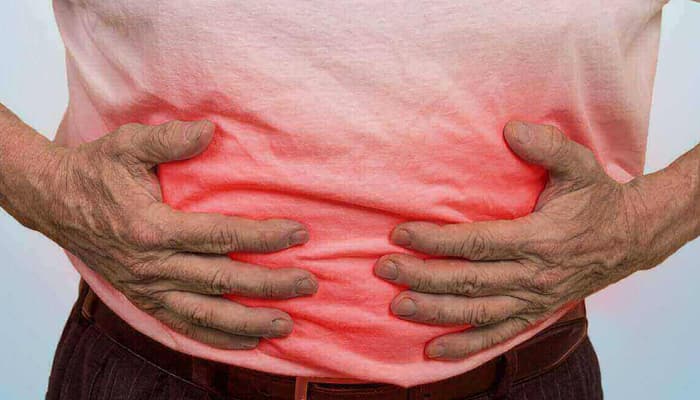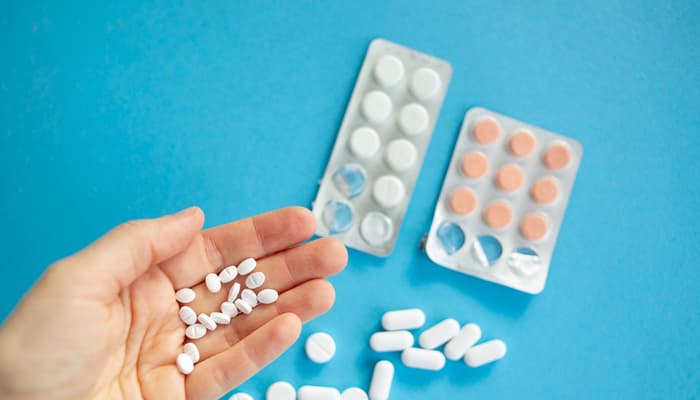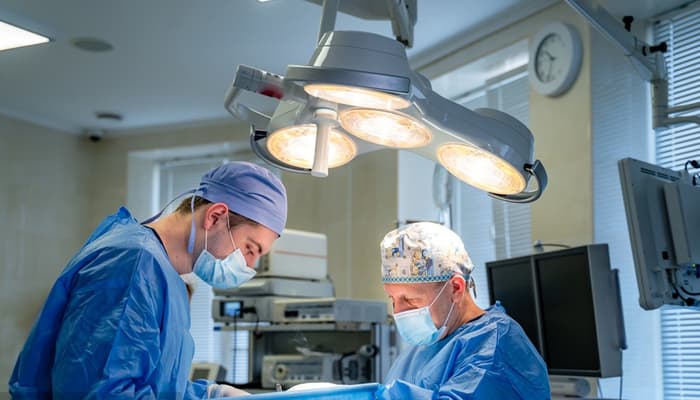
Crohn’s disease is a chronic inflammatory bowel disease that can affect the entire gastrointestinal tract. In other words, the inflammation and its associated symptoms can extend from the mouth to the rectum. During a Morbus Crohn’s flare-up, several segments of the digestive tract that are far apart from each other can be inflamed simultaneously.
However, most often, it is the last part of the small intestine (terminal ileum) before its junction with the colon that is affected. Another important feature of Crohn’s disease is that, unlike ulcerative colitis, the inflammation affects all layers of the intestinal wall.
This inflammation can spread rapidly to adjacent structures and cause an accumulation of pus (abscesses) or otherwise create connections between the inflamed intestine and other organs (fistulas), e.g. the bladder, uterus or skin, which would complicate the course of the disease and its therapy.
Symptoms and disorders
The most common symptoms of Crohn’s disease (as with ulcerative colitis) are more frequent stools (from a few to several, 10 times a day), liquid, and usually with the presence of blood and mucus. With diarrhea, abdominal cramps also occur, which can worsen after eating and partly subside after defecation. Due to the inflammatory state, the presence of fever is also, usually in bursts.
Since the small intestine and stomach can be affected by Crohn’s disease, nausea or vomiting are sometimes part of the clinical picture. Blood loss in the colon, combined with poor absorption of iron and vitamins in the small intestine, can cause anemia, which manifests as general fatigue and shortness of breath. In the medium to long term, this can lead to a deterioration in nutritional status and weight loss.
In severe cases, scarring of the intestinal wall can lead to intestinal obstruction (blockage of intestinal contents) or even distension of a loop of the bowel, which in rare cases can lead to rupture of the intestinal wall and peritonitis.
In Crohn’s disease as well as ulcerative colitis, this can cause inflammation in other parts of the body. These inflammations include painful skin redness (erythema nodosum), purulent necrosis (pyoderma gangrenosum) or joint or eye inflammation. These symptoms outside the intestine can sometimes appear years before these disorders, at the same time as them or as a result of gastrointestinal problems.
Therapy

There is currently a selection of drugs that inhibit the activation of the immune system, they are at your disposal. The selection of the appropriate drug depends on the location of the inflammation in the gastrointestinal tract as well as the degree of severity of the inflammation.
Aminosalicylate derivatives (e.g. Mesalazine)
These drugs are less effective for Crohn’s disease than for ulcerative colitis. They can be used both during a flare-up and during remission, as a preventative measure. They are available as tablets, enemas or suppositories. They are very poorly absorbed by the intestine into the circulation and therefore cause few systemic side effects.
Corticosteroids

Corticosteroids are called cortisone derivatives. They can be given as tablets or intravenously. Corticosteroids are powerful anti-inflammatory drugs, but they are only used for a limited period during an acute flare-up because of their significant side effects.
Immunomodulators
This is the name given to drugs that reduce the reactions of the immune system and thus the inflammatory response of the intestine. The main drugs in this class are azathioprine and 6-mercaptopurine. Methotrexate is also used, although less frequently than the other two.
Biotherapies
This category includes artificially modified antibodies that inhibit the action of molecules that are essential for the activation of the immune system. The drugs that belong to this category are very powerful and can also be effective in patients who do not respond to other categories of drugs.
Surgery

Surgical therapy is performed in Crohn’s disease, especially in cases of complications, to ensure intestinal transit (e.g. in the case of strictures with scarring), removing pus accumulations (abscesses) locally and closing connections with other organs (fistulas), and finally preventing a rupture of the colon (in the case of severe dilatation of the intestinal loops).
Cancer risks in patients with chronic inflammatory bowel disease
Patients with Crohn’s disease have a much higher risk of developing colon cancer during the course of their disease. For this reason, these patients should be enrolled in a follow-up program and undergo regular colonoscopies, even if they apparently have no symptoms. The intervals between colonoscopies depend on the location of the inflammation; in most cases, and according to current guidelines, a colonoscopy is planned 8 years after the initial diagnosis and then every 1 to 2 years.
